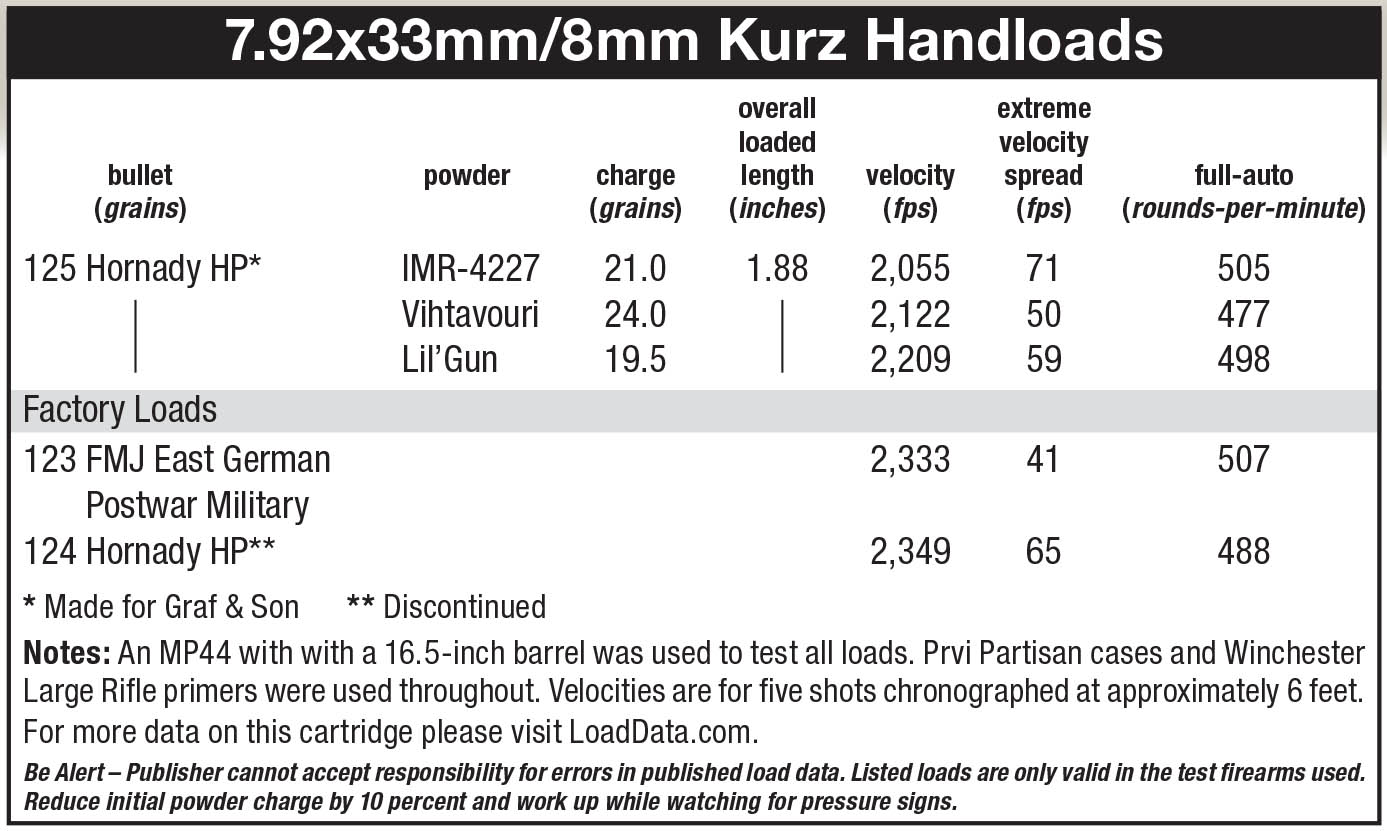7.92x33mm
Shooting the MP44
feature By: Mike Venturino | October, 19
Before getting into the true meat of this article, I’d like to tell a couple of stories about my personal firearm upon which it is based. That’s the Sturmgewehr (aka MP44 or Stg44), which in German means literally “storm rifle,” or it can be translated into
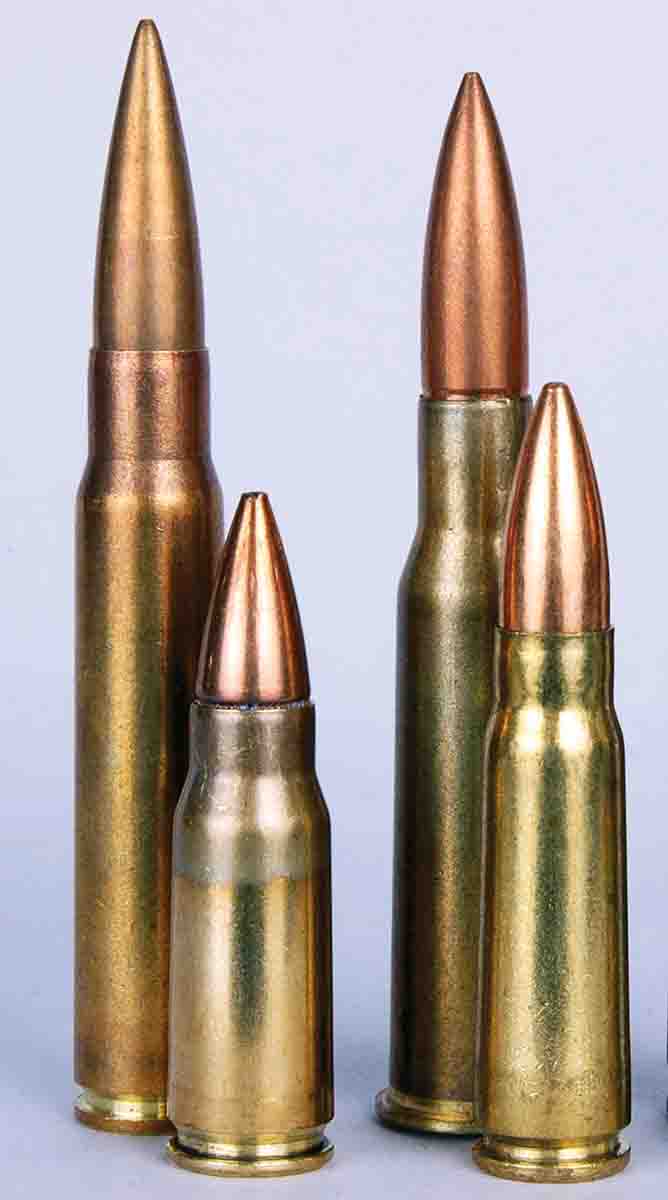
Back in 2010 in the midst of assembling my collection of World War II firearms, Yvonne approached me in my office while I was typing away. She laid a hand on my shoulder and said, “If I give you some of that money I inherited after Dad died would you invest it in some more World War II machine guns.” Rather generously, I replied, “Of course, I’d be happy to help you out!” Hence, an immediate call to Ohio Ordnance Works, and a few months later after the Federal paper work was finalized, the MP44 arrived. (I admit I’d been watching it on the company’s website.)
A few times since 2010 I’ve put the MP44 on display at Montana gun shows to help fellows fill out a World War II firearms display. Generally speaking, the following has been the manner in which the gun show public has responded. First there are the elk hunting types; they have never noticed it. Next are the know-it-alls that will loudly say to their companion, “Boy that old AK has been around a lot!” Lastly there are the truly educated military firearms enthusiasts. Upon seeing the MP44 on the table they stop dead in their tracks. Making eye contact with me, they ask, “Is that real?” To which I say, “Yes.” Then they say, “Is it functional?” Again I say, “Yes.” Invariably they next ask, “Have you shot it?” My response is, “Of course, hundreds of times.” And then lastly, with a look of hope in their eyes, most ask, “Can I hold it?” Yes, Sturmgewehrs are that rare.
The story of the Sturmgewehr is convoluted. As early as 1942 the firms of Walther and C. H.
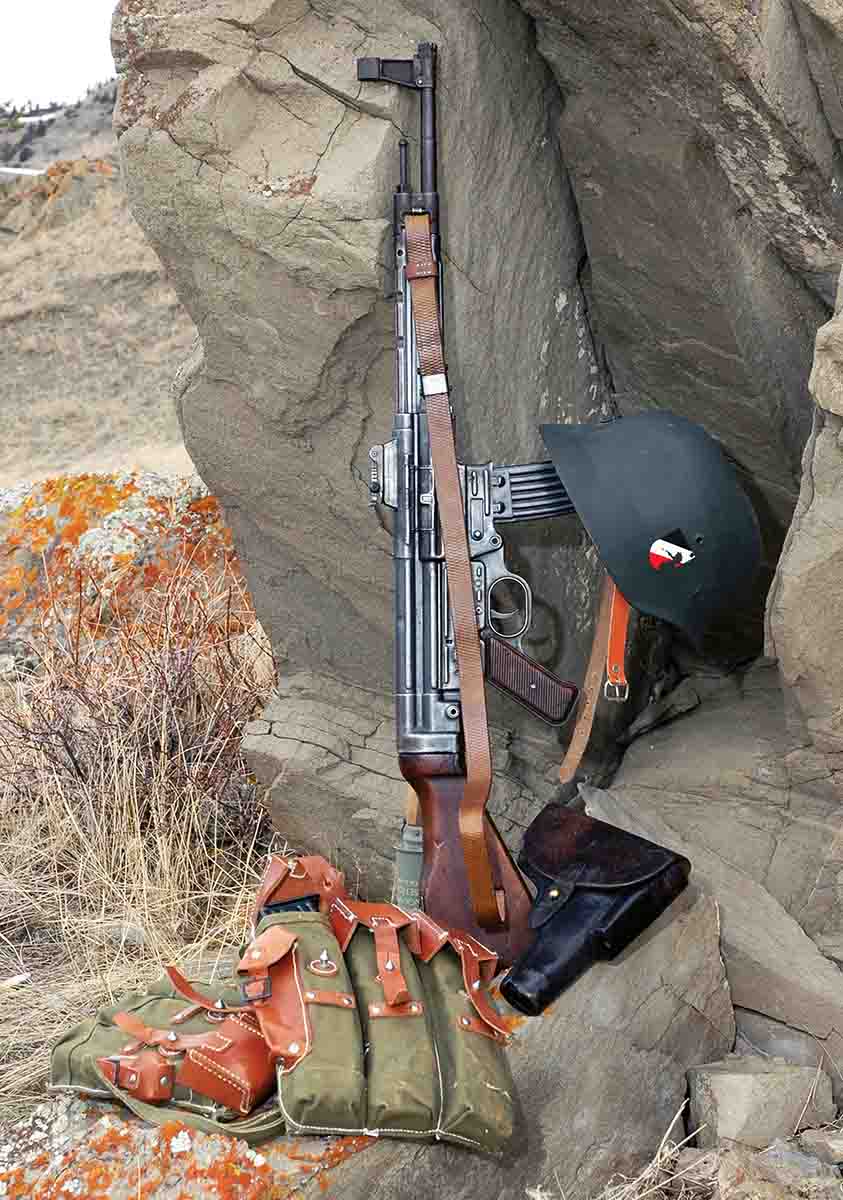
Ironically, the mind behind the Haenel rifle was Hugo Schmeisser, whose name became synonomous with the German MP40 submachine gun. He had nothing to do with its development but almost everything to do with the later select-fire Sturmgewehr. (Herr Schmeisser was captured by the Russians in 1945 and taken to the Soviet Union. He spent 10 years working for them in the same factory that developed their famous AK47. Coincidence?)
Germany’s ordnance officers chose the Haenel rifle over Walther’s. It was first designated MP43/1. Soon thereafter its name was changed to MP43 because barrel diameter was reduced so that K98k Mauser grenade launchers would fit. For a reason no research material seems to recognize, the name was changed to MP44 in April 1944 but changed again in October 1944 to the final Sturmgewehr, or Stg44.
Normally in German weapons terminology, MP stands for machine pistol, aka submachine guns. The Sturmgewehr was nowhere close to a machine pistol. Its length was 37 inches with a 16.5-inch barrel, and its weight unloaded was 11 pounds. Its buttstock was wood with a pistol grip also having wood panels. The rest of the rifle was metal; using stamped sheet steel where possible, such as the forearm.
Magazine capacity was 30 rounds. If there were variants holding fewer rounds, I’ve never heard of them. Functioning was select-fire. A simple button above the pistol grip provided semi-auto function when pushed to the right, and full-auto when pushed to the left. Rate of full-auto fire was 500 rounds per minute. German designers liked placing rifles’ gas pistons above the barrel. They also designed the rifle for easy cleaning. Pushing another button at the rear of the receiver frees it from the buttstock, and then the entire bolt assembly can be pulled out.
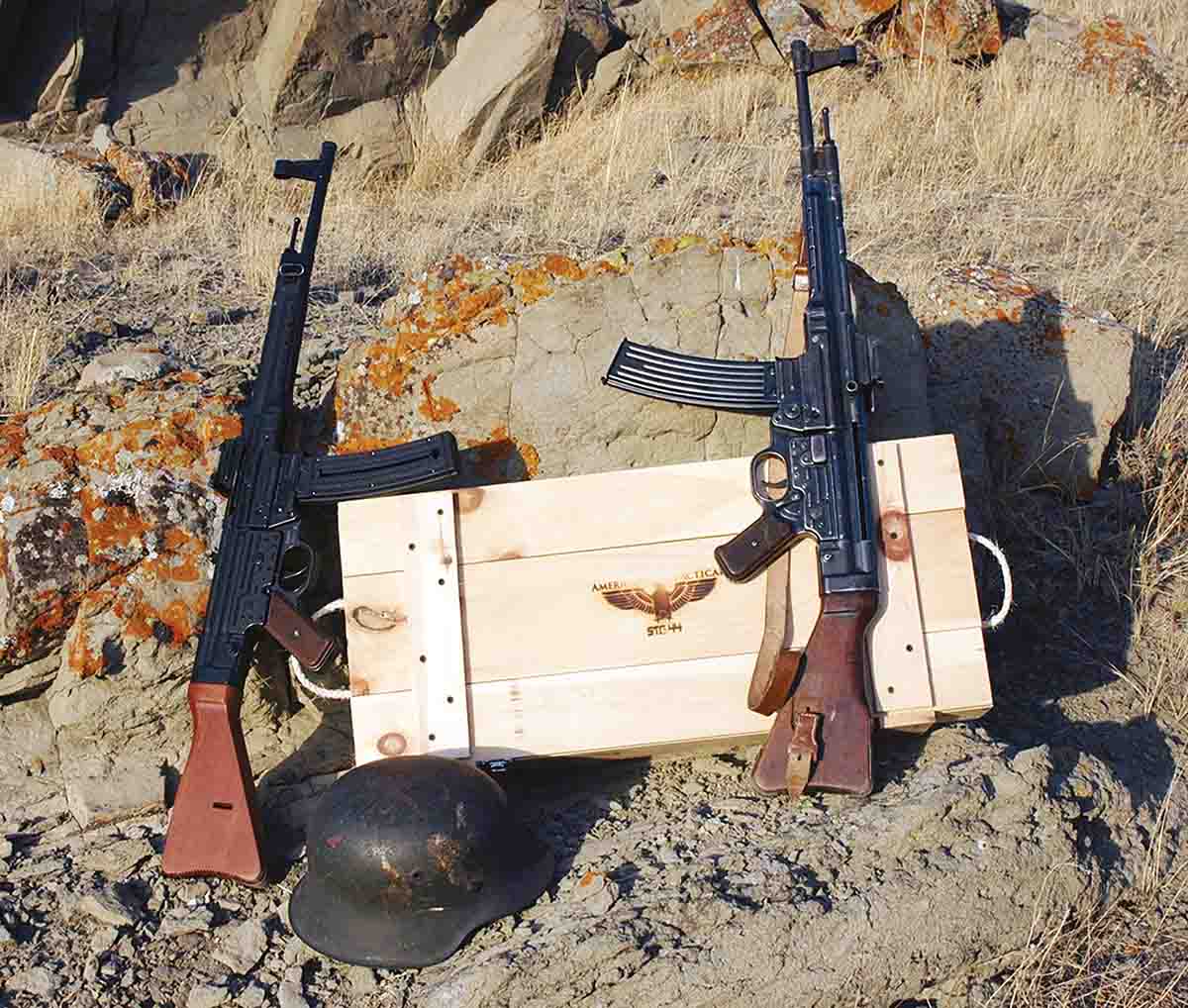
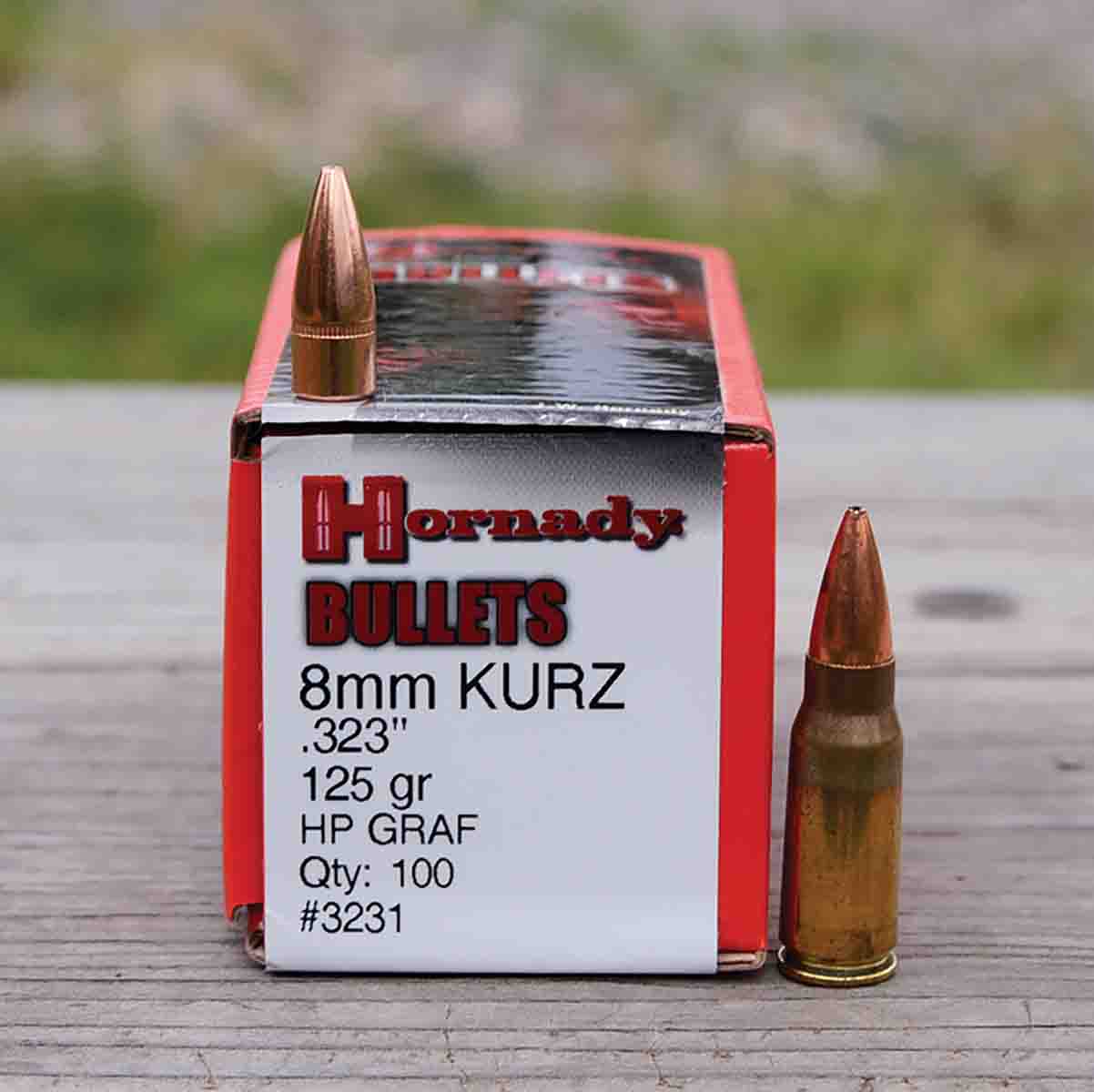
German cartridge designers reduced their standard round’s case length from 2.244 inches (57mm) to 1.299 inches (33mm). Case head size and shape remained the same. Bullet weight dropped from 198 grains to 123 grains. Velocity was reduced to approximately 2,300 fps. Of course, there was also a substantial reduction in powder charges. All of these savings were important to a nation producing billions of rounds of ammunition every year.
(Of course, this resulted in the first intermediate military cartridge. A historical footnote is that as soon as the Soviets captured some of this ammunition they developed their own intermediate cartridge; the 7.62x39mm. In various types of AK47 rifles, it is probably
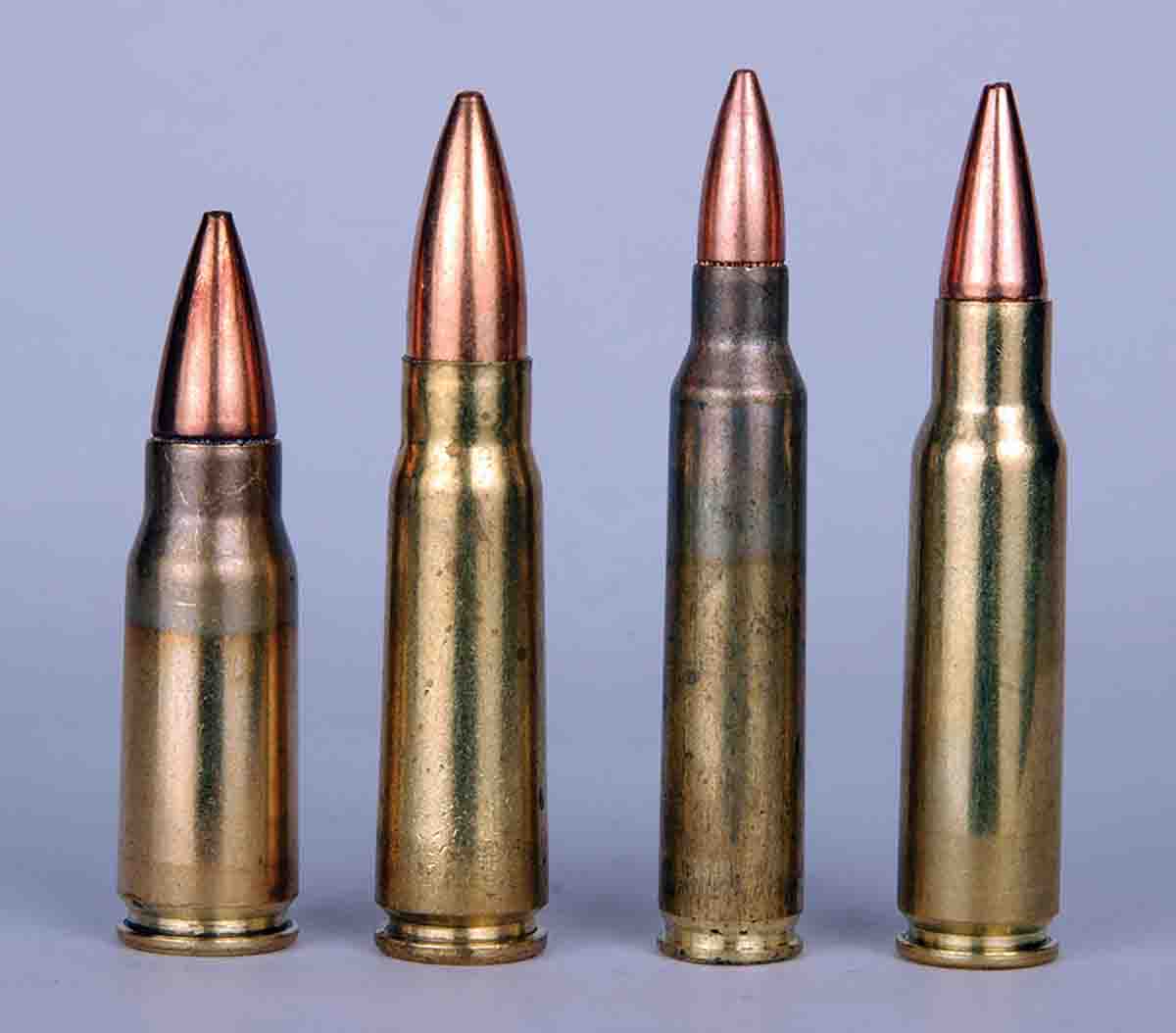
As far as my considerable research has determined, except for a few K98ks chambered also for 7.92/8mm Kurz for tests and some other manufacturers’ prototype select-fire rifles, no other military or commercial rifle has been chambered for it. A few years ago there were rumors floating around that both German and American manufacturers were going to make new semi-auto only Sturmgewehrs. That never came to fruition. However, a German firm named GMG does produce a .22LR version of the Stg44. I bought one and found it to be a fun and reliable plinker. It was even shipped in a wood crate. However, as might be expected, owning a “real” Sturmgewehr made having a .22 version anticlimactic. It was sold.
To my great surprise and benefit, 7.92/8mm Kurz ammunition and components have not been difficult to obtain. I’m surprised because Germany only produced about 425,000 Sturmgewehrs in three primary factories. These were Sauer & Sohn, Erma and Steyr, and the reason for the word “primary” is that many subcontractors produced parts all over Germany. By its code, my MP44 was made by Erma. Of those produced in wartime, surely only a fraction made it to the U.S. Of course, figures for legal ones in circulation now are not available, but I’ve already described the effect seeing a Sturmgewehr has on World War II history enthusiasts.
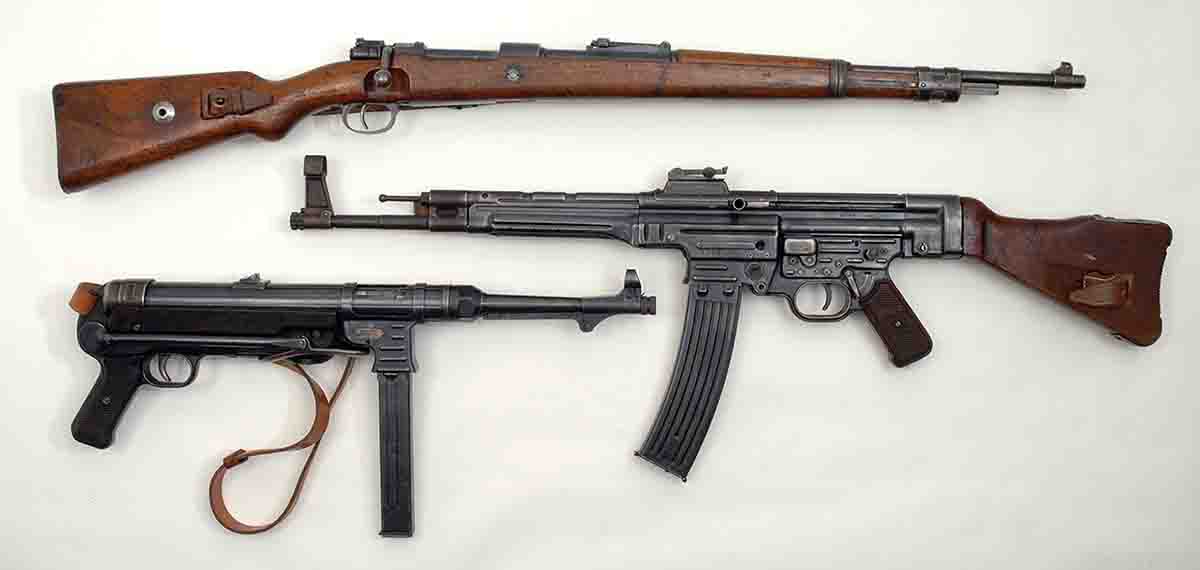
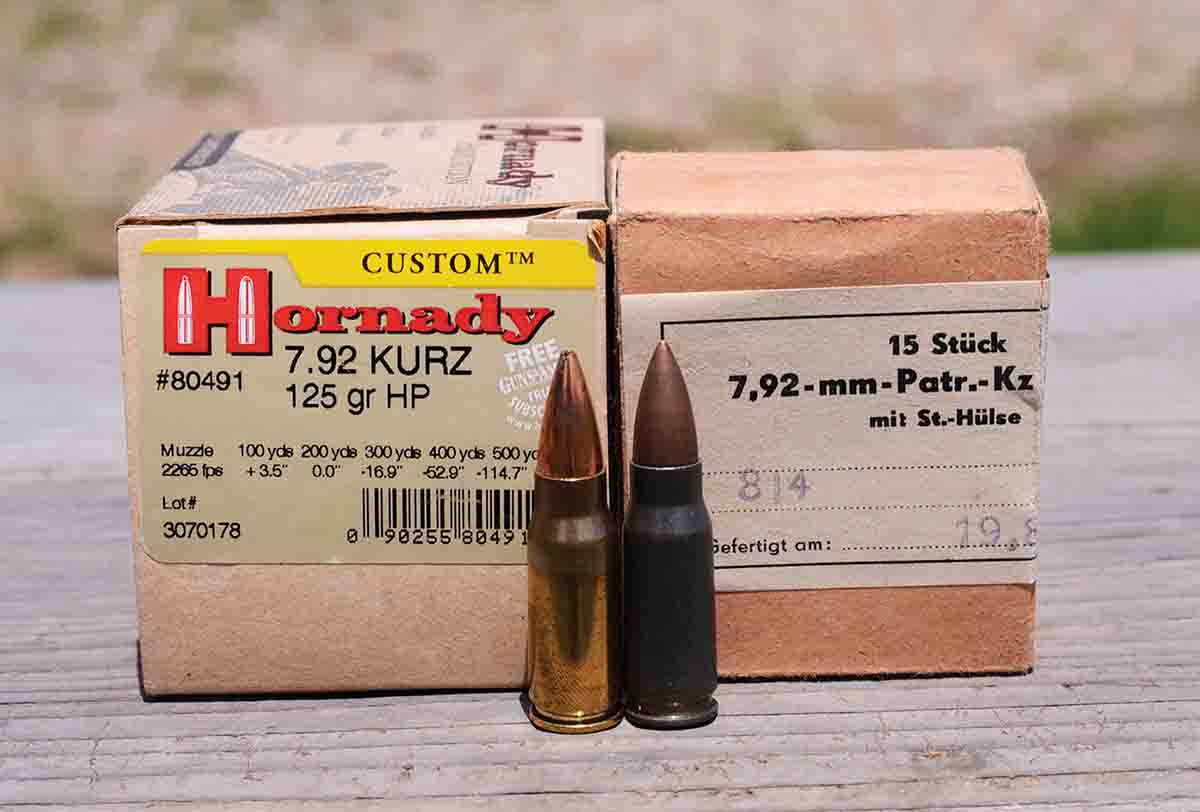
Naturally, it has benefited me greatly that 7.92/8mm Kurz factory ammunition and components have been readily available. However, there is a slight conundrum to the subject. My initial factory ammunition was labeled Hornady, as were my bullets and brass. However, Hornady’s website makes no current mention of this cartridge. Also its Hornady Handbook of Cartridge Reloading, 8th Edition, does list loading data but with a note that its .323-inch, 125-grain HP bullets are discontinued. As it turns out, Hornady made those 7.92/8mm Kurz supplies exclusively for a distributor named Graf & Sons.
For this article I began a search on the Internet seeking current ammunition and
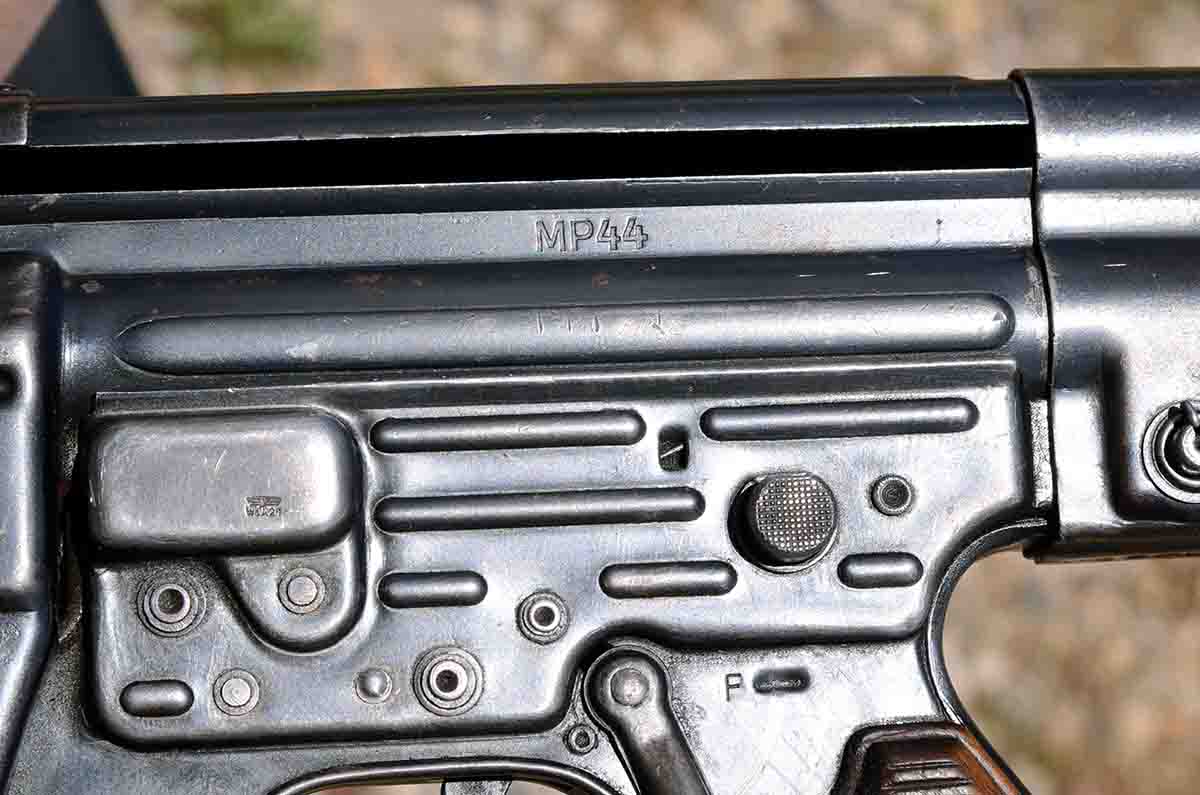
As an aside the first brass I loaded dated prior to this minor explosion of 7.92/8mm Kurz components. It was given to me and
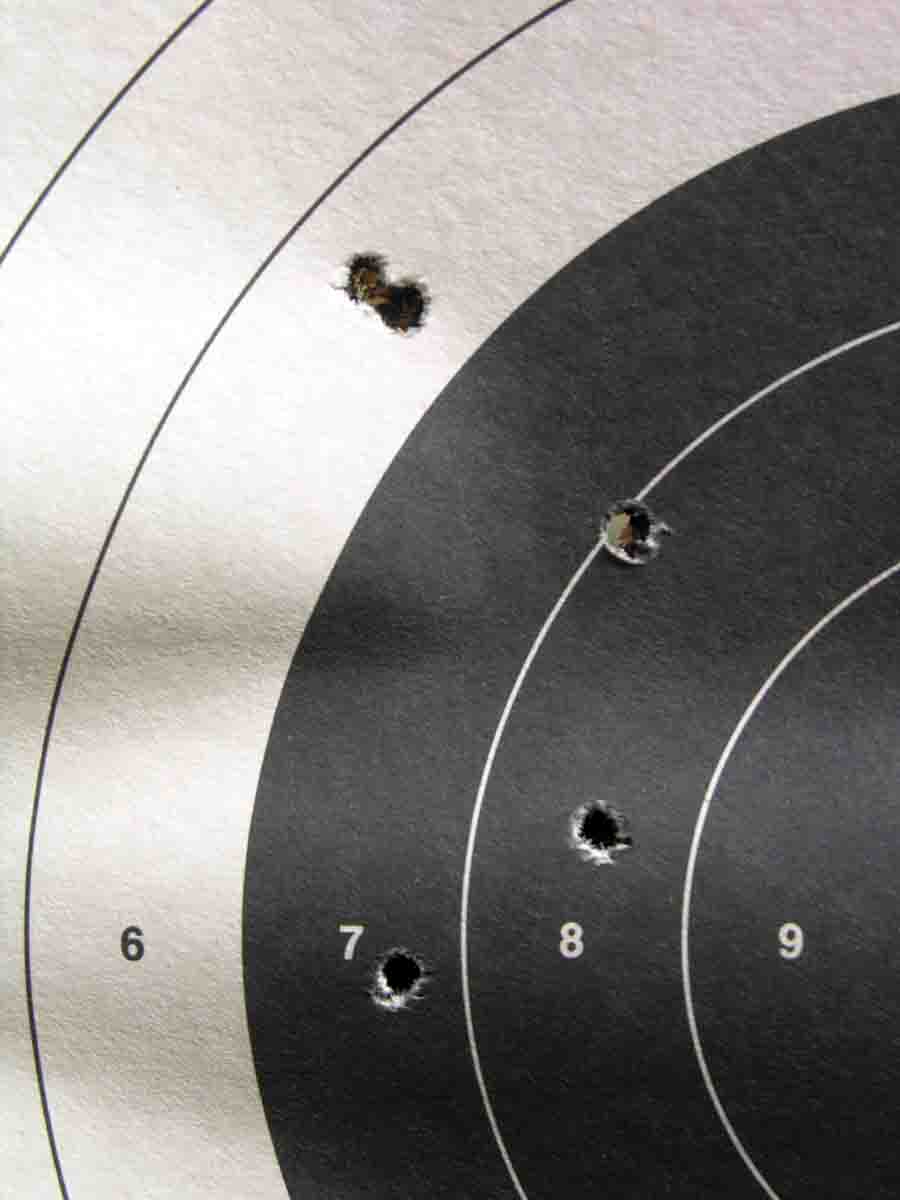
As said earlier, I’ve fired hundreds of rounds through my MP44, both handloads and factory loads. This has given me some insight. One is that the long 30-round magazine makes shooting from a benchrest a little difficult. Sandbags must be high enough so that the magazine clears the bench top. In regard to accuracy, this 75-year-old wardog is no tackdriver. It will hold to 4 inches or so at 100 yards, with most group dispersion vertical. However, I have a steel plate measuring 18 inches wide by 24 inches tall at 300 yards and can hit it about 99 percent of the time with the open rear and post front sight. Although the German ordnance men felt these rifles were for 400 yards and under, the rear sight has graduations to 800 meters.
Another factor in regard to handloading is that 125-grain HP bullets must be firmly crimped in the cannulure. Semi- and full-autos vigorously slam cartridges about, so the bullet must be locked in. Of all my World War II full-autos, the MP44 is most prone to stoppages. Failures to feed happen commonly, and when they do the stopped round gets bent. But I’ve noticed that all the bullets have remained in place.
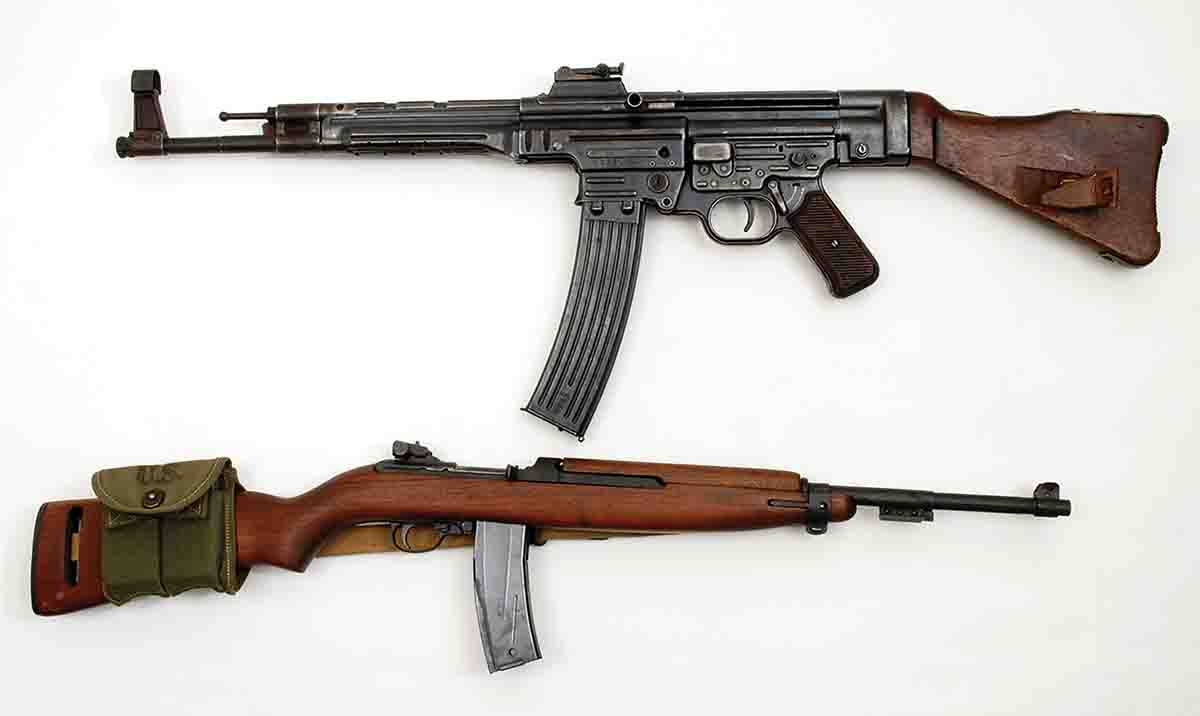
Here is one more story to end with. A friend had an elderly German fellow visiting and knew that I was going to be at a certain shooting event on a certain day. He asked if I would bring my MP44 and he would bring his visitor. It seems that when very young this fellow was drafted into the Wehrmacht for the defense of Berlin in 1945. He fought with a Sturmgewehr. So on the appointed day when I met the man, I had my MP44 hidden behind my back. After shaking hands, I brought it around and the gents eyes could not have opened wider. He started speaking rapidly in his native tongue. After we got him slowed down, he related that he had not seen one since the day Berlin capitulated. Not only that, he got to shoot one again!



